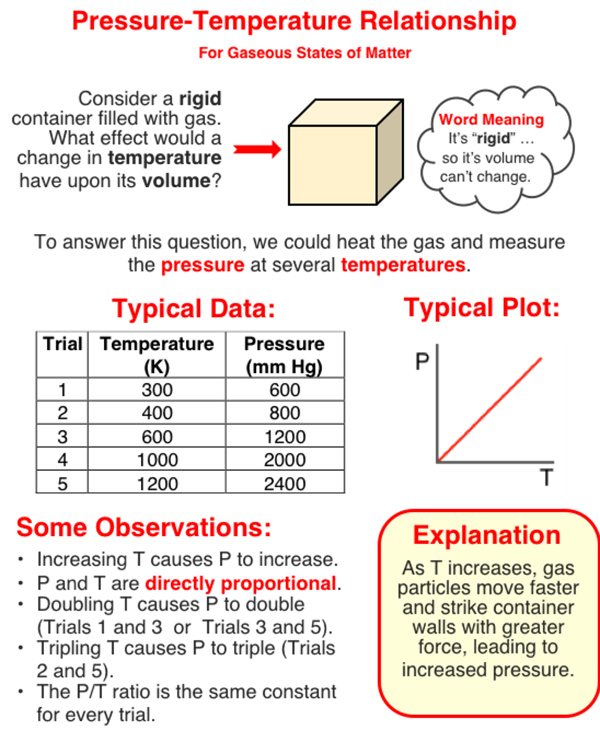The pressure of a sample of gas is dependent upon the Kelvin temperature of the gas. Increasing the Kelvin temperature increases the pressure. The two quantities are directly proportional to one another. A quadrupling of the Kelvin temperature will quadruple the pressure of the gas.
Pressure and Temperature - Questions 6 Help
There are two questions in this Question Group. Each question is very similar to one another. The question below is one of the questions.
Version 1:
When the Kelvin temperature of the gas is quadruple (increased by a factor of four), the pressure of the gas becomes _____.
a. four times larger
b. eight times larger
c. sixteen times larger
d. one-fourth the size
e. one-eighth the size
f. one-sixteenth the size
g. Not possible to tell
Which pairs of trials demonstrate this relationship? Select all that apply.
a. 1 and 2
b. 1 and 3
c. 1 and 4
d. 1 and 5
e. 2 and 4
f. 2 and 5
g. 3 and 4
h. 3 and 5
